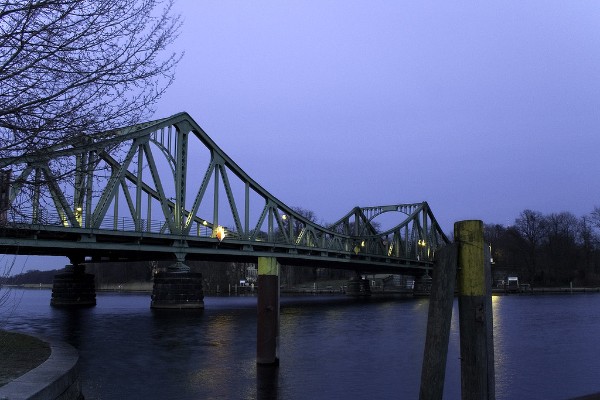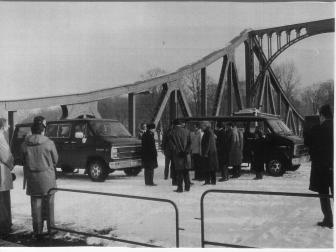Three days in 300 years: Spies on the bridge
On three days of its history of over three hundert years Glienicke Bridge was the scene of exchanges of secret agents. It was one of the few places in the world where the United States and the Soviet Union stood directly opposite each other. And so “deals” could be made here without any of their allies having any say in the matter.
The first time this happened was on the 10th February 1962, when the American pilot Francis Gary Powers and the KGB spy Rudolf Ivanevich Abel were exchanged.
Universal International News, 12th August, 1957: Col. Rudolf Abel is returned to Brooklyn for arraignment, faces charges, after 9 years of spying
It was not until 12th June 1985 that agents from East and West were exchanged a second time. In what was evidently an operation agreed at very short notice - in the numbers of those exchanged the largest since the end of the Second World War - a total of 27 agents were freed. Four “scouts” from Eastern European countries who had been imprisoned in the West and 23 agents of the American secret services who had been held in Eastern Europe.

There was wide media cover of the third and final exchange of agents on Glienicke Bridge on 11th February 1986. The reason for all the media attention was that the human-rights campaigner Anatoly Sharansky, who had been imprisoned in the Soviet Union until then was one of those exchanged. He had been in a penitentiary after having been accused of spying. If the Soviet Union wanted to save its face under its new leader Mikhail Gorbachev, it could only release Sharansky by making him part of an exchange deal.
The West very reluctantly agreed - after all, it had been fighting to secure Sharansky`s release for years. In addition to Sharansky, a further eight persons - all of them agents - were freed the same day: three members of Western secret service organizations, five from the East.
